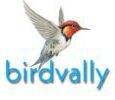A baby owl looks like a small, fluffy bird with big eyes. Its body is covered in downy feathers, and it has a short beak and talons. Baby owls are born blind and cannot fly.
They are cared for by their parents until they are old enough to fend for themselves.
If you’re lucky enough to spot a baby owl, you may be wondering what they look like. Baby owls are actually quite different from their adult counterparts. For one, they don’t have the same level of plumage.
Instead, they sport a more downy appearance that helps keep them warm. Additionally, their eyes are much larger in proportion to their heads and bodies than those of adults. And lastly, baby owls tend to have lighter colored faces than adults.
All of these physical traits help young owls survive in the wild until they’re ready to fend for themselves.
What Do Baby Owls Eat
If you’re like most people, you probably think of owls as nocturnal predators that feast on small rodents. However, not all owls are strictly carnivorous. In fact, many species of owls will supplement their diet with fruits and berries – especially when raising their young.
So, what do baby owls eat?
While the exact diet of a baby owl will vary depending on the species, there are some common staples. Baby owls typically eat more insects than their adult counterparts – up to 95% of their diet can be composed of insects during their first few weeks of life!
This is because insects are an easy source of protein and fat, which is essential for rapid growth. Once they start to fledge (grow feathers), they will gradually add more vertebrates (such as rodents) to their diet until they are eating mostly mammals by the time they reach adulthood.
So next time you see an owl hunting at night, remember that they’re not just after mice – they’re after whatever gives them the nutrients they need to survive and raise their young successfully!
How Can You Tell a Baby Owl?
Assuming you would like tips on how to tell if a baby owl is present:
There are several ways that you can use to determine whether or not a baby owl is nearby. One way is to listen for the sound of owlets calling to their parents.
Another way is to look for pellets, which are regurgitated matter that contain the bones of an owl’s prey. You can also look for signs of nesting, such as sticks and leaves arranged in a cup-like shape. If you see an adult owl during the day, it is likely that there is a nest nearby.
What Does a Baby Little Owl Look Like?
If you’re lucky enough to spot a baby owl, you’ll notice that they are much smaller than their adult counterparts. They also have softer, downy feathers and their eyes are not yet fully developed. Although they are not as agile as adults, they can still fly short distances.
You may also see them hopping around on the ground as they learn to hunt.
What Month Do Baby Owls Hatch?
In North America, baby owls hatch primarily in April and May. The eggs are incubated for about 30 days before the chicks start to hatch. The chicks are born blind and helpless, and they stay in the nest (or “brood”) for about six weeks until they learn to fly.
During this time, the parents take turns hunting and bringing food back to the nest. The mother owl does most of the incubating, but the father owl brings her food so she can eat while she’s sitting on the eggs.
What Does an Owl Fledgling Look Like?
An owl fledgling is a young owl that has not yet learned to fly. When they are born, they have no feathers and their eyes are closed. As they grow older, they develop feathers and their eyes open.
They learn to fly by jumping out of their nest and flapping their wings.
Baby owls look like aliens
Conclusion
A baby owl looks like a small, fluffy bird with big eyes. Its body is covered in downy feathers that are typically gray, brown, or white. It has a hooked beak and talons that help it grasp prey.
Baby owls are born blind and helpless, but they grow quickly and learn to hunt on their own within a few weeks.
